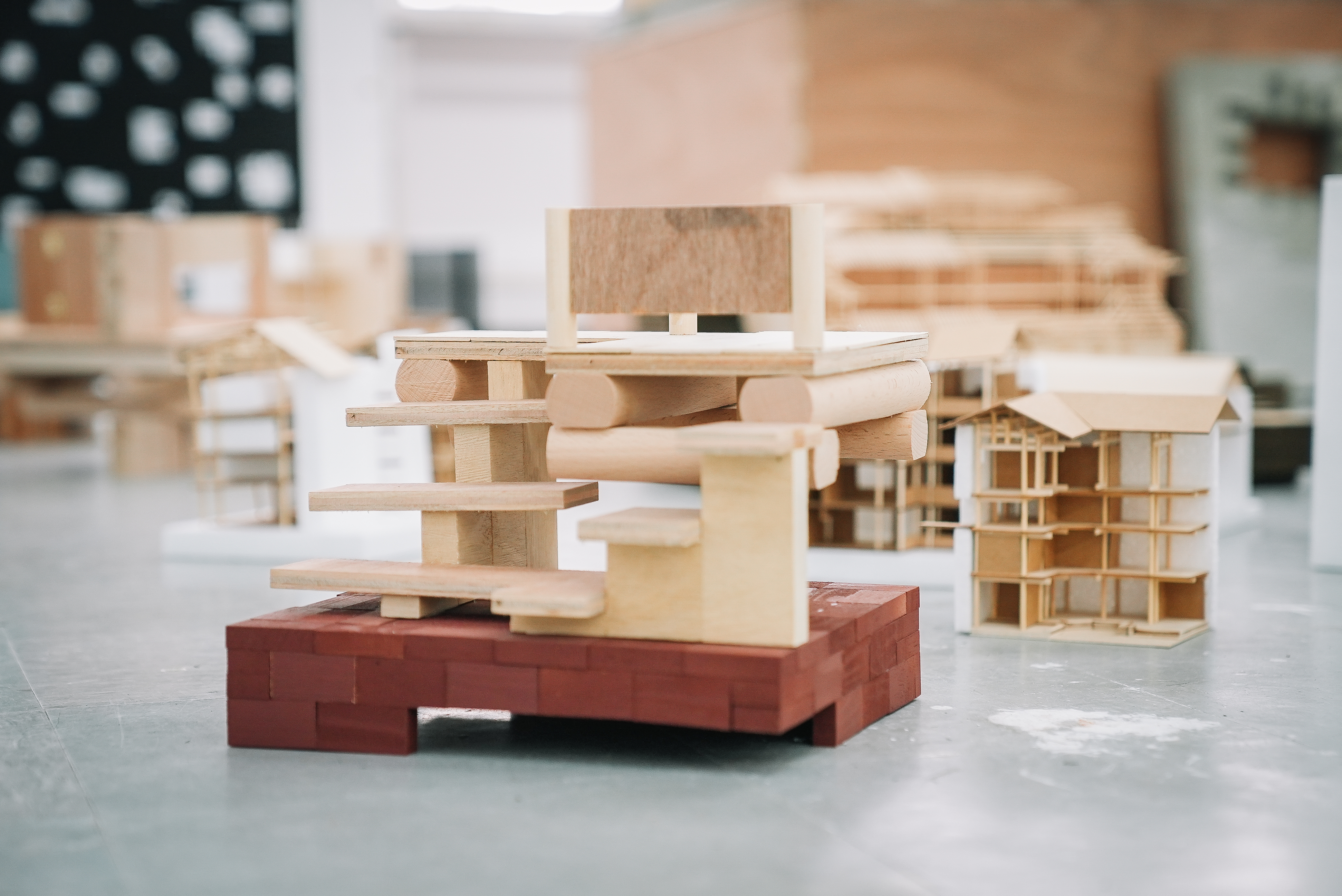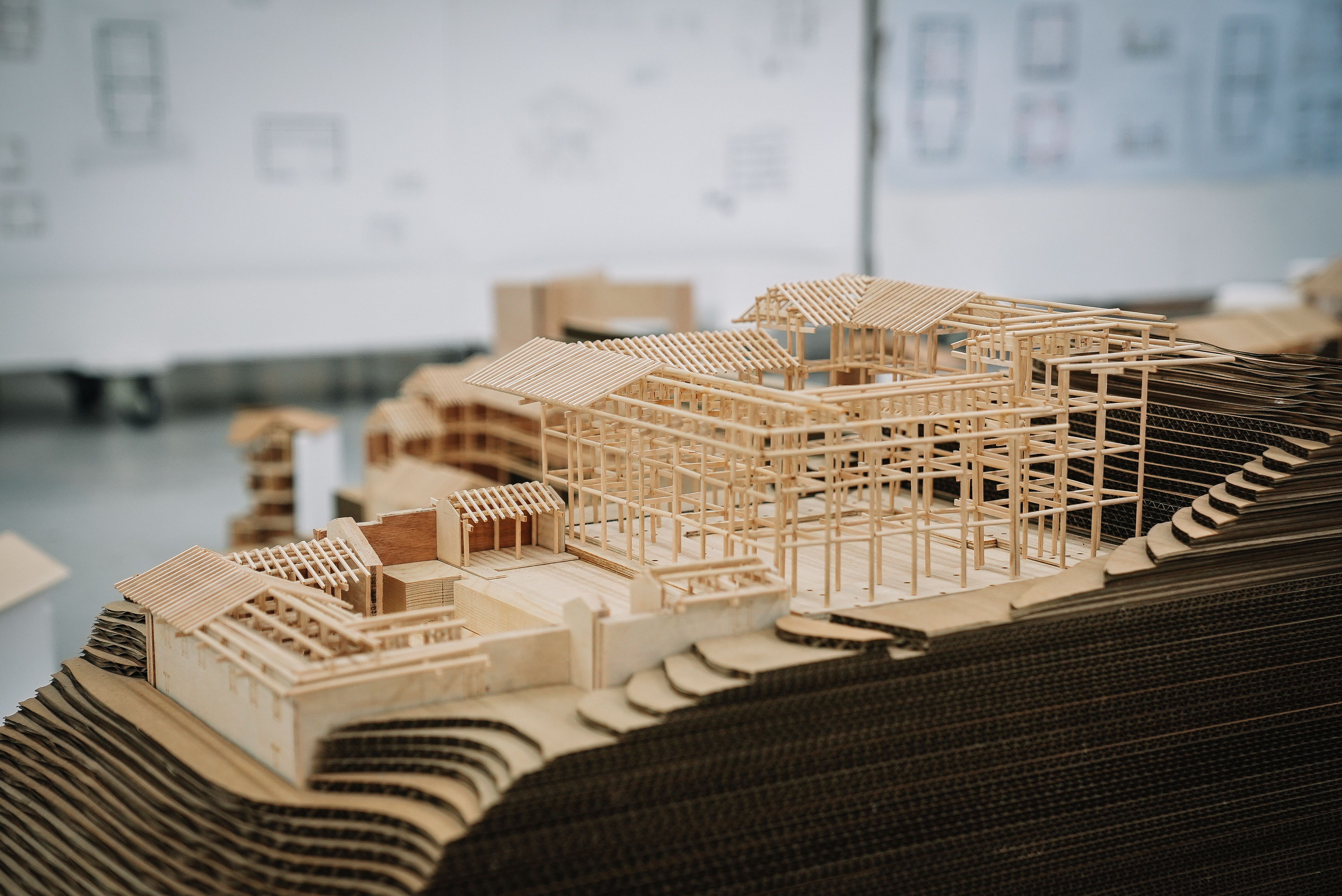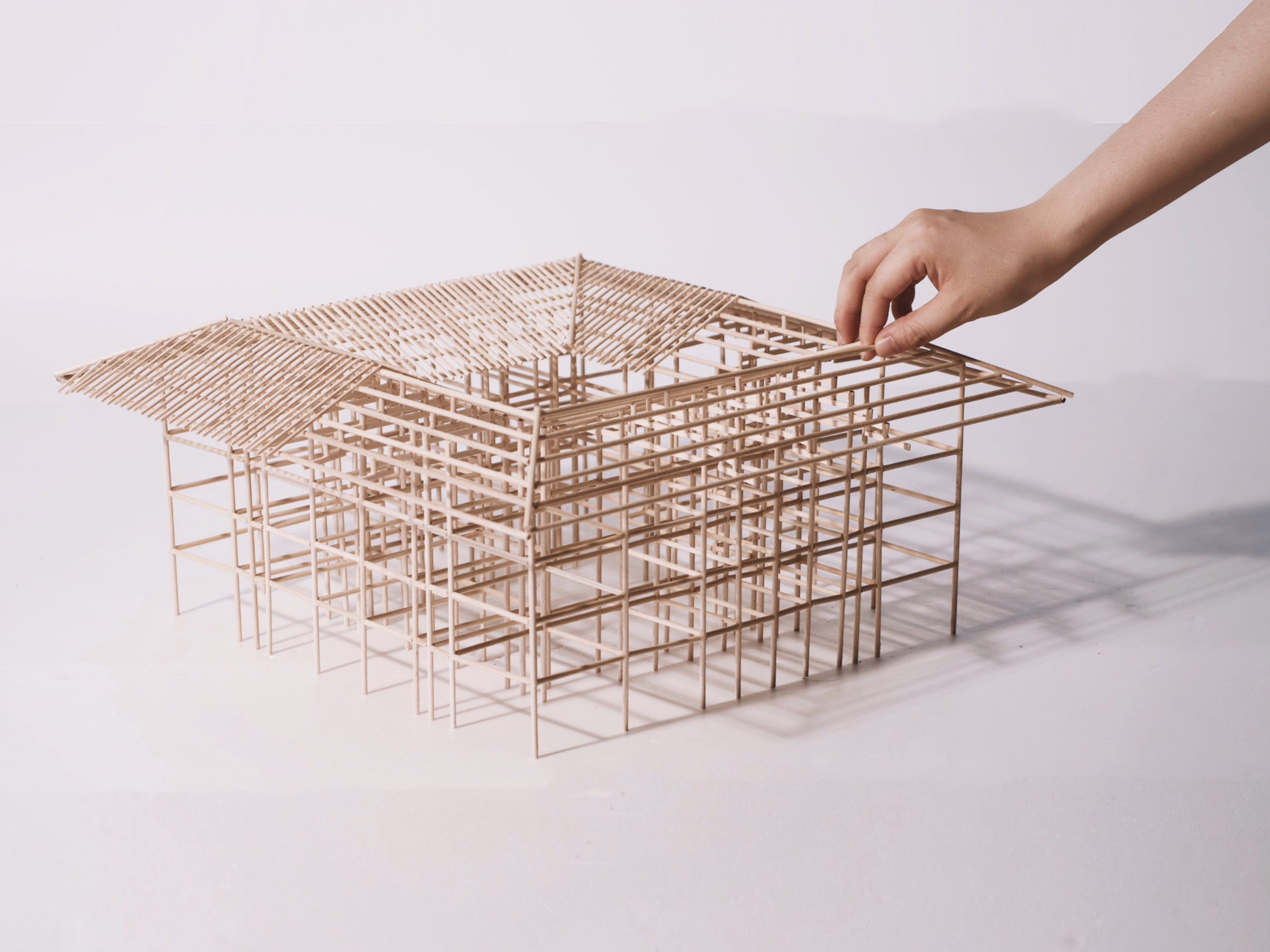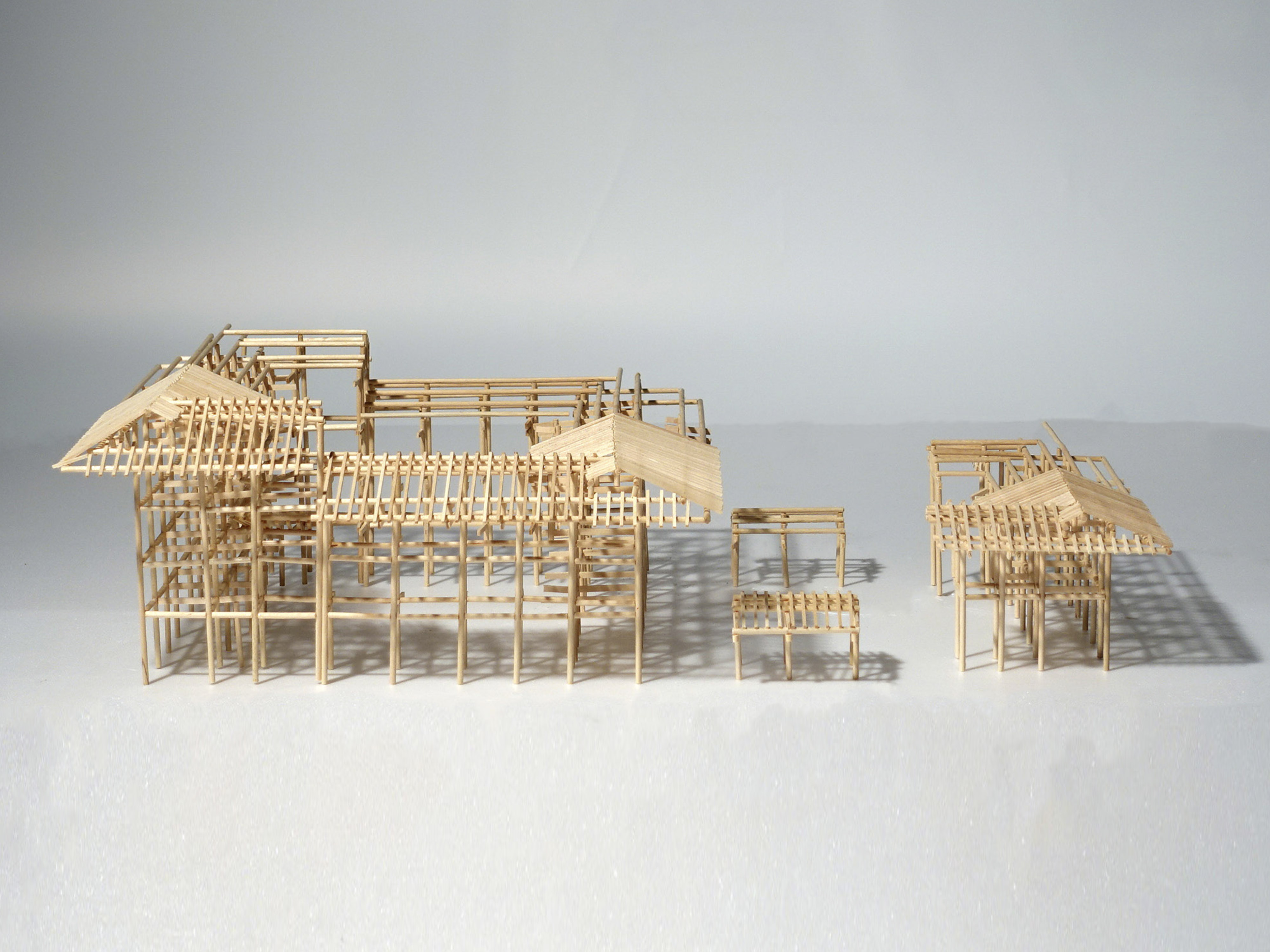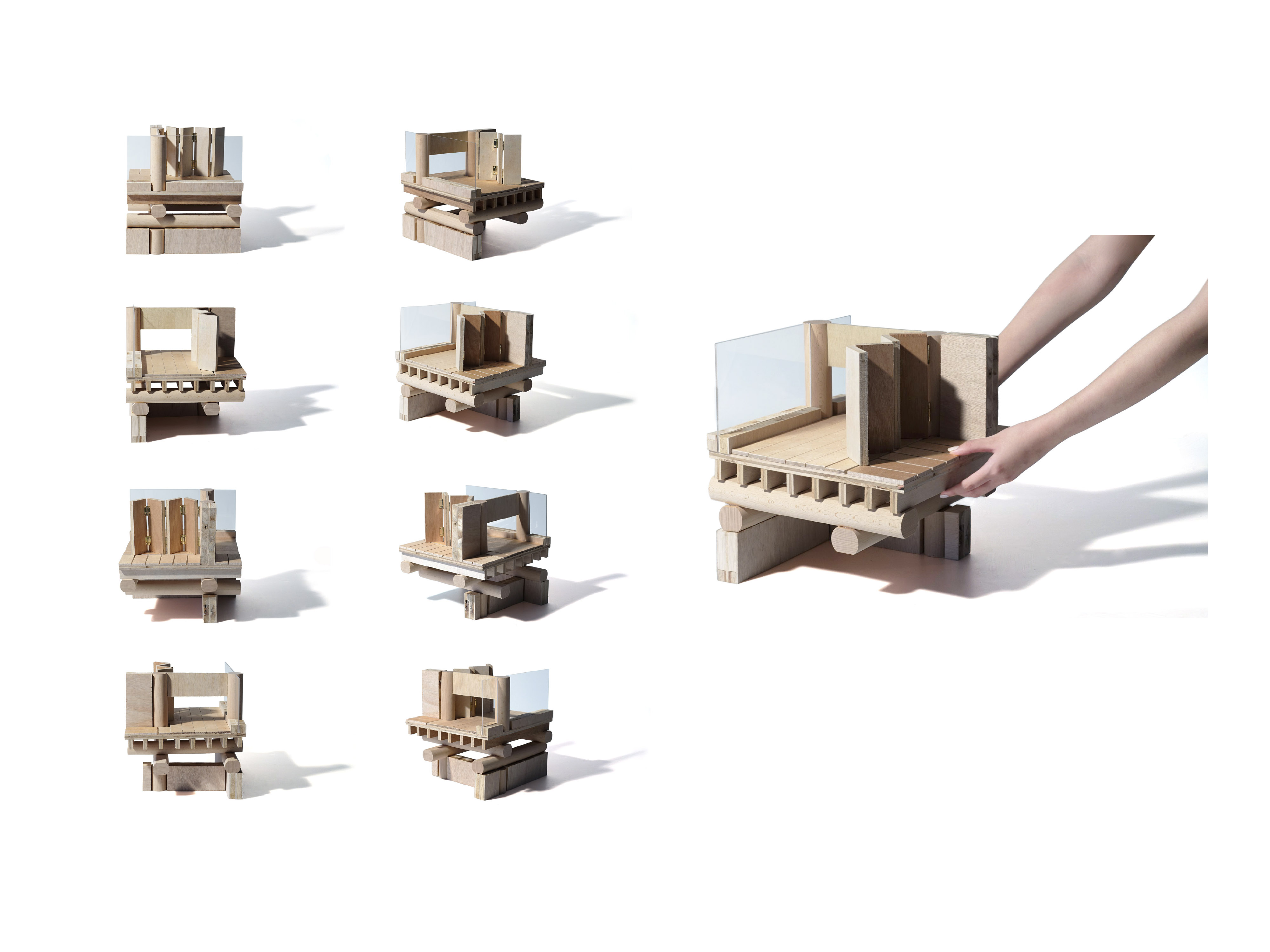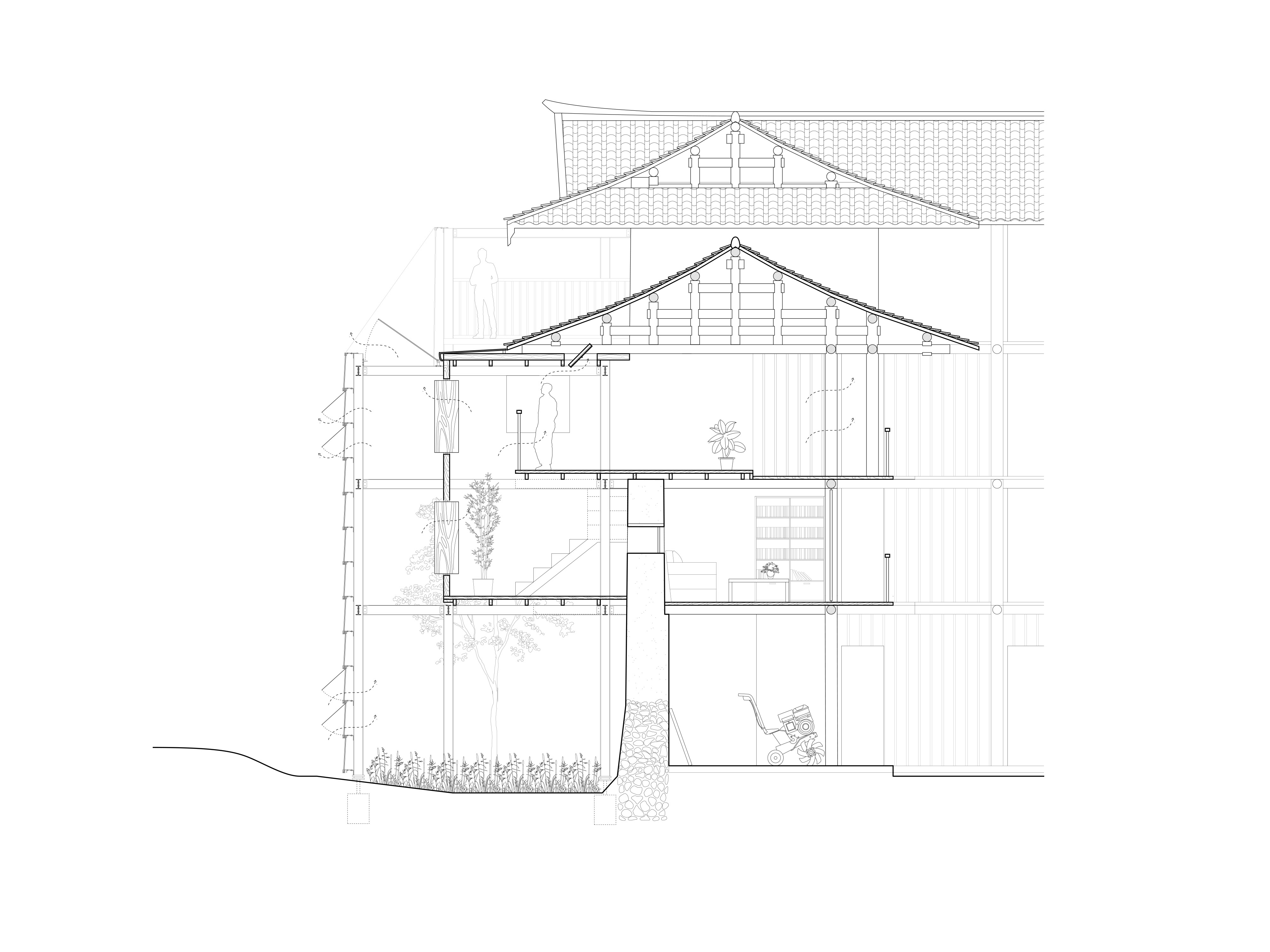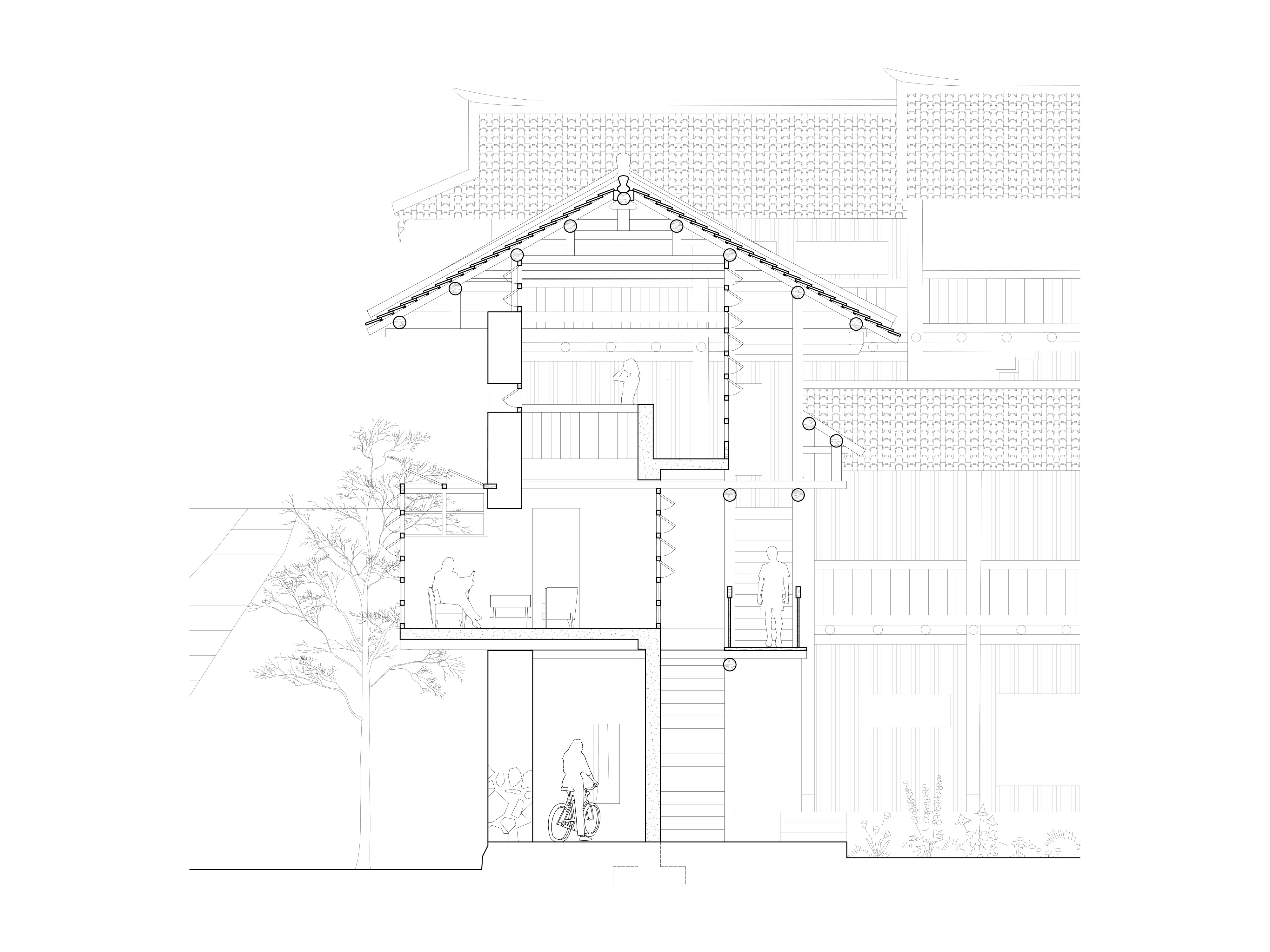、


家宅 之五:土楼再造
A HOUSE A HOME VI: TULOU REMIX
港大建築 2021春 二年級設計工作室
HKU Spring 2021 YEAR 2 DESIGN STUDIO
This studio is devoted to the study of Tulou as a sustainable model for collective living. By understanding Tulous as both solid and fluid matter, we investigate how to live modern and sustain tradition at the same time, and how the making of the house could contribute to the imagination of the home.
Tulou as Solid Matter
Tulous are characterized by their primary shapes and massive rammed earth walls from the outside. Usually three to four stories tall, these solid walls secure the Hakka immigrant families living from bandits and wild animals. Inside, a dense system of timber frame spatially prescribes the individual ownership for the households, each occupying one standard structural module from the ground to the top.
Tulou as Fluid Matter
Anchored to the ground, Tulous’ peripheral rammed earth is an excellent thermal mass with high specific heat capacity that stores energy during the day and dissipates heat at night. Inside, the open timber framework allows air, light, and water to enter from the central courtyard and move through the space, creating different microclimates of shades, humidity, and ventilation. The timber frame also provides the flexibility for individual expansions and transformations. These material properties, along with Tulous’ orientation in relation to solar positions and the surrounding landscape (river, mountain, and forest), contribute to the invisible comfort and experience inside.
A HOUSE A HOME VI: TULOU REMIX
港大建築 2021春 二年級設計工作室
HKU Spring 2021 YEAR 2 DESIGN STUDIO
This studio is devoted to the study of Tulou as a sustainable model for collective living. By understanding Tulous as both solid and fluid matter, we investigate how to live modern and sustain tradition at the same time, and how the making of the house could contribute to the imagination of the home.
Tulou as Solid Matter
Tulous are characterized by their primary shapes and massive rammed earth walls from the outside. Usually three to four stories tall, these solid walls secure the Hakka immigrant families living from bandits and wild animals. Inside, a dense system of timber frame spatially prescribes the individual ownership for the households, each occupying one standard structural module from the ground to the top.
Tulou as Fluid Matter
Anchored to the ground, Tulous’ peripheral rammed earth is an excellent thermal mass with high specific heat capacity that stores energy during the day and dissipates heat at night. Inside, the open timber framework allows air, light, and water to enter from the central courtyard and move through the space, creating different microclimates of shades, humidity, and ventilation. The timber frame also provides the flexibility for individual expansions and transformations. These material properties, along with Tulous’ orientation in relation to solar positions and the surrounding landscape (river, mountain, and forest), contribute to the invisible comfort and experience inside.
Students
Chan Hei Lam Brittany, Cheung Tsz Kiu Jackie, Chow Ho Lam, Chuah Hao Feng, Foo Kwan Yee Queenie, Huang Ming Jin And, Hui Yui Gi Catherine, Li Hing Fung Boris, Sun Ziyue, Tam Wing Huen Raven, Wong Yan Shun Carson

